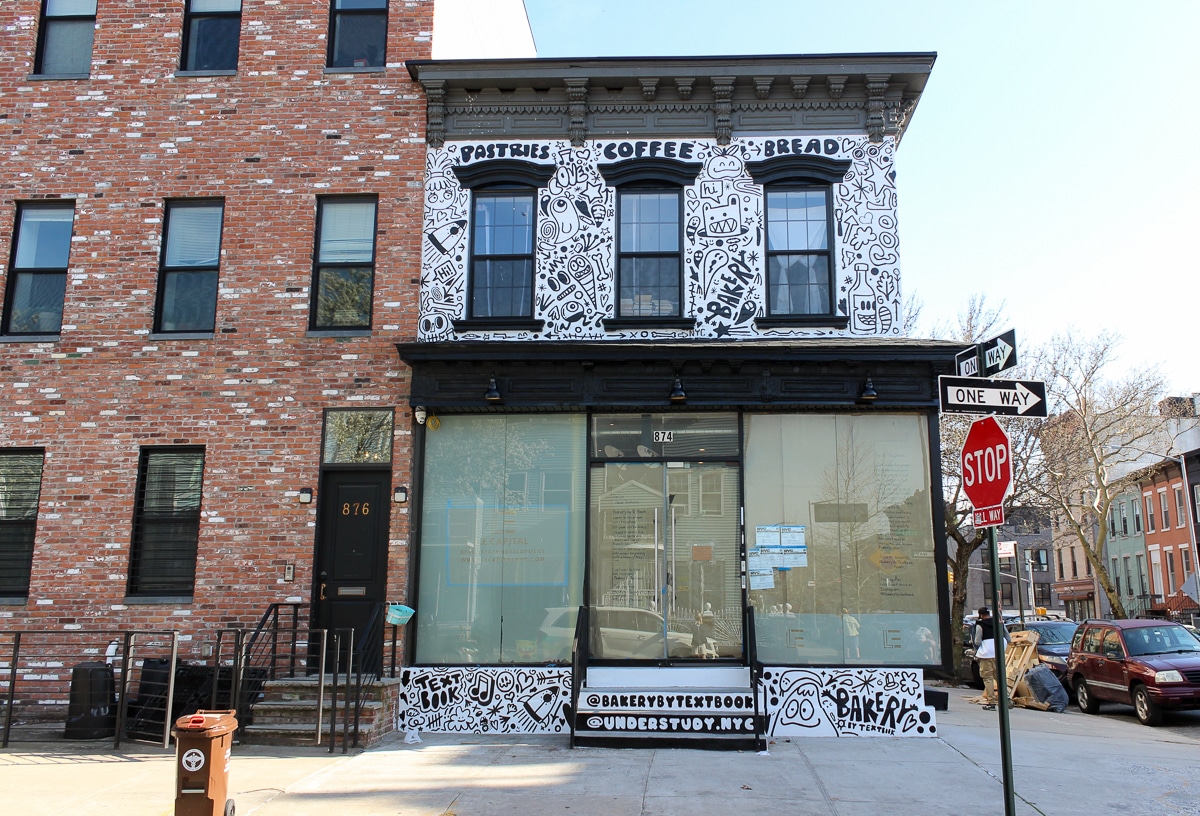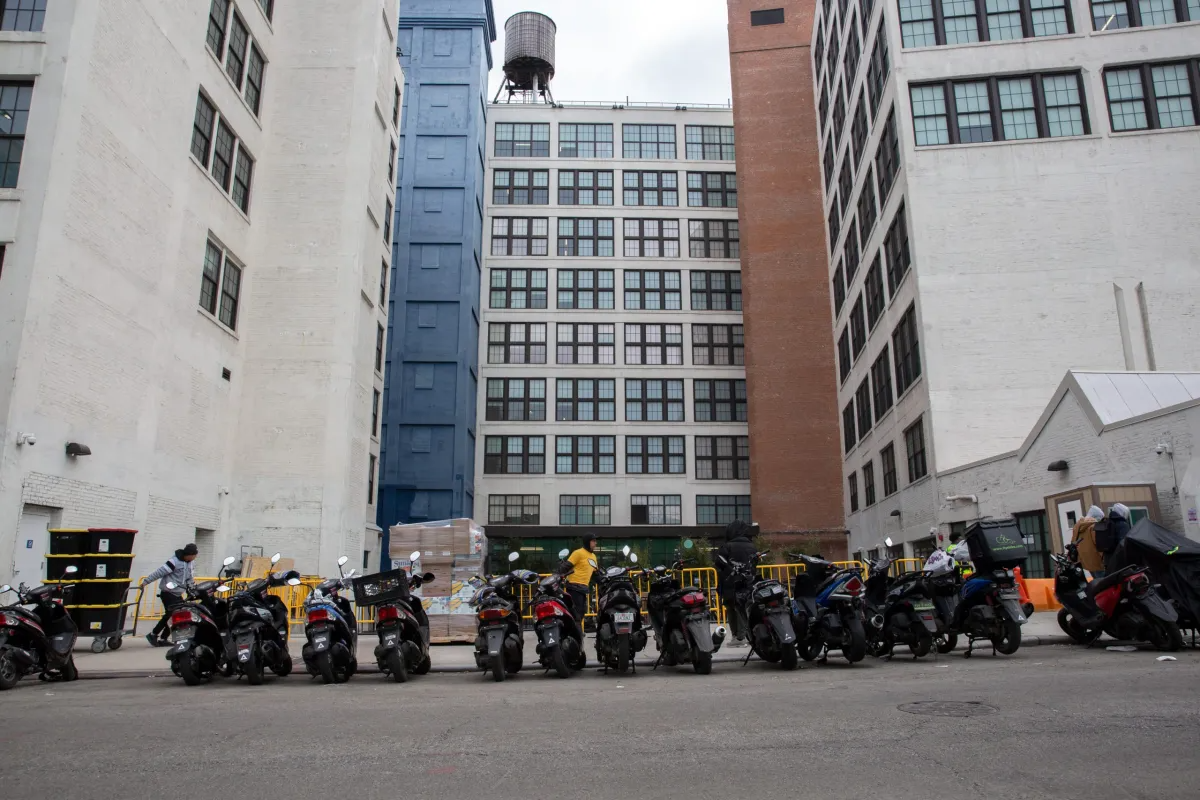Building of the Day: 937 Fulton Street
Brooklyn, one building at a time. Name: Originally Rubel Coal and Ice Corporation, now drug rehab clinic. Address: 937 Fulton Street Cross Streets: Corner Waverley Avenue Neighborhood: Clinton Hill Year Built: 1928 Architectural Style: Neo-classical Architect: Edward M. Adelsohn Other Buildings by Architect: Jewish Orphan Asylum, New Hebrew School–Brownsville (both gone), Temple Petach Tikvah in…

Brooklyn, one building at a time.
Name: Originally Rubel Coal and Ice Corporation, now drug rehab clinic.
Address: 937 Fulton Street
Cross Streets: Corner Waverley Avenue
Neighborhood: Clinton Hill
Year Built: 1928
Architectural Style: Neo-classical
Architect: Edward M. Adelsohn
Other Buildings by Architect: Jewish Orphan Asylum, New Hebrew School–Brownsville (both gone), Temple Petach Tikvah in Crown Heights, Brooklyn Hygeia Ice Plant, Brooklyn Hebrew Maternity Hospital, row houses, commercial buildings, stores in Brownsville, Crown Heights and other areas of Brooklyn and Queens.
Landmarked: No
The story: In 1907, Samuel Rubel could be found hauling his pushcart through the streets of Brownsville selling ice. He later began carrying coal, in season, as well. He was a fixture in this new Jewish immigrant community, and he managed to make a living for his family, one cartful of these lifesaving elements at a time. Twenty-some years later, he was the owner of Brooklyn’s largest coal and ice business. His company had assets of over $40 million, with 134 coal and ice branches across every borough except Staten Island. He had a staff of over 400 people, and the coal and ice was delivered in 800 Rubel trucks. In 1927, he decided it was time to build a new headquarters in a more central part of Brooklyn.
Samuel Rubel chose this part of Fulton Street because it was in a successful commercial area, and was close to downtown, public transportation of all kinds, and next door to a vibrant Clinton Hill neighborhood. He hired architect Edward M. Adelsohn to design what was advertised to be the “largest coal and ice office in the world.”
Adelsohn was a successful architect with offices on Pitkin Avenue in Rubel’s old neighborhood of Brownsville. He was Cooper Union educated, and much of his work was with Jewish organizations and businesses. He was the architect of several temples and synagogues, as well as hospital buildings, orphanage buildings, and schools. He also built ice plants, stores, and homes, most specifically in landmarked Jackson Heights, Queens.
He designed a classically inspired office building with a Moderne touch, for Samuel Rubel’s expanding company. It hugged the corner of Fulton and Waverly and was quite unusual in its streamlined corners and modern use of age old materials. When the building was complete, the press gushed about it profusely. They loved the modern lines, the marble clad lobby and interior, and even the mahogany room dividers, desks and filing systems for the office workers. The building had an airy and spacious cafeteria for the employees, and plans were in work to turn the roof garden, with its distinctive tropical fencing, into a free community space for local charitable organizations’ use.
In 1929, after merging with dozens of local coal companies, Rubel sold all of his coal interests, and announced that he would be going back to his roots – ice. He was going to concentrate on his ice and new ice cream business, and his charity causes. The company was now called the Rubel Corporation. Skipping ahead a bit, by sometime in the 1930s, the corporation also owned the Ebling Brewery Company. Its official headquarters was also at this address, as can be seen in the ad below.
A more detailed history of Samuel Rubel is forthcoming, he was an interesting man. But by the dawn of America’s involvement in World War II, the building seems to have begun its journey as a social service provider. In 1941, it was listed as a service center for men, sponsored by the Salvation Army. Rubel may have been sharing the space; still, it’s hard to tell at this point. It is a big building. Samuel Rubel died in 1949, leaving his widow and children a large estate worth over $8 million.
My memories of this building have always been when it has been a drug treatments center and methadone clinic. A quick search shows that many different drug treatment centers have operated out of here over the years. I’ve always wondered what remains of the posh office spaces that once filled this state of the art headquarters for a Jewish immigrant from Riga, Latvia who made good – real good.
(Photograph:Scott Bintner for PropertyShark)
Just a reminder: Morgan Munsey and I are leading a tour of Clinton Hill tomorrow at 11. Tickets are still available here. The tour is sponsored by the Society for Clinton Hill, an old and venerable advocate for this great community. Please join us as we point out some of the great architectural and cultural landmarks of one of my favorite neighborhoods.












What's Your Take? Leave a Comment